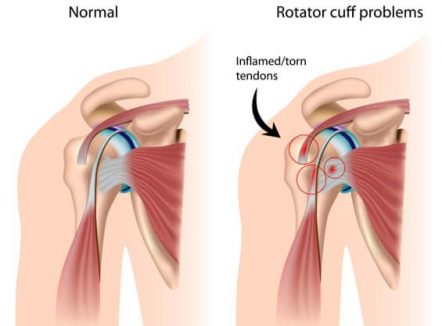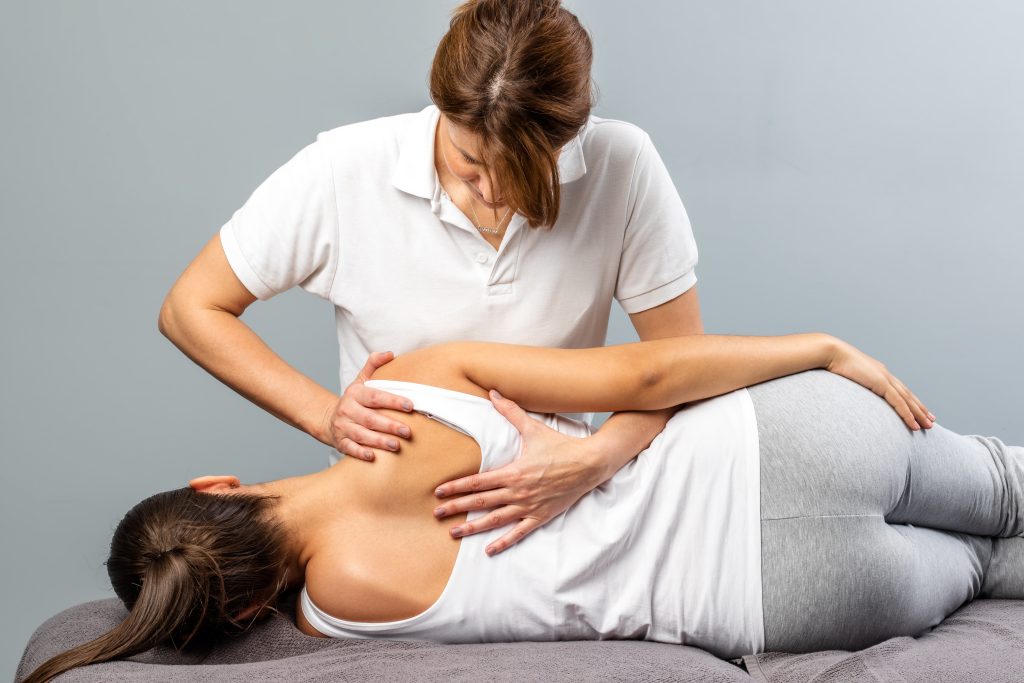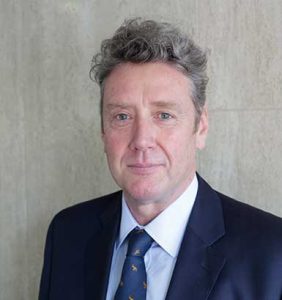Rotator cuff injury
With Mr Simon Moyes, Consultant Orthopaedic Surgeon

Rotator cuff injury: tennis, lifting weights and other overhead sports
Posted on Thu Jun 6, 2019
Mr Simon Moyes, Consultant Orthopaedic Surgeon, explores the common rotator cuff injury in overhead sports.
Why are rotator cuff injuries so prevalent?
As summer approaches, those niggling issues in your joints start to surface again. When taking to the tennis courts or heading to the gym to hone the excesses of winter away, it’s not unusual to experience shoulder pain.
One of the most common shoulder problems is subacromial impingement syndrome: pain and weakness in the shoulder muscles mainly felt over the outer deltoid muscle (on top of the shoulder). It is particularly bad when lifting your arm above your head, out to the side, or reaching up behind the back, and it can really affect your sleep if you lie on your side. You are likely to feel pain at the front or side of the shoulder with overhead activities like swimming, throwing or racquet sports; all common summer sports.
How does a rotator cuff injury occur?
The collection of tendons and muscles of the shoulder that are deep to the deltoid is called the rotator cuff; it is like an inner tube of shoulder tendons. Every time you raise your arm, the upper arm bone is forced against the uppermost tip of the shoulder blade (the acromion) where it meets the collarbone (clavicle). As a result, there is always going to be some impingement of the tendons and the fluid-filled sac (bursa) that acts as a cushion within the joint. It is only with prolonged or intensive activity involving raising the arm that impingement can damage or irritate the cuff or bursa, causing problems.
Can it be treated conservatively?
Luckily, about 90% of cases can be treated non-operatively. The condition can be eased with an anti-inflammatory such as ibuprofen for up to six weeks, while physiotherapy to open up the joint and stretch and strengthen the cuff muscle will help with recovery. If those measures don’t work, then an ultrasound-guided cortisone injection into the subacromial space is usually effective.
In about 10% of cases, other treatment is required.
What operation might be needed?
Arthroscopic surgery is used to decompress inflamed tendons by removing the part of the acromion bone and removing any arthritic tissue from the acromioclavicular joint which is rubbing on the tendon. With this surgery, patients are able to start moving the arm almost immediately and a sling is only needed for the first two or three days.
If there is a tear of the tendon, this will be repaired arthroscopically, but this requires a more lengthy recovery – four weeks in a sling, and a course of physiotherapy.
How can we be careful to avoid rotator cuff injury?
So, if you are drawn to sports that involve repeated overhead activity – tennis, squash, weight training, rock climbing – be aware of any pain in your shoulder and make sure you get a diagnosis to prevent a small injury from ruining your summer.
Mr Simon Moyes is a Consultant Orthopaedic Surgeon based at Cromwell Hospital in London.
Oryon Imaging
Oryon Imaging offers affordable private MRI scans, ultrasound scans, X-rays and DEXA scans in London.
Share this article
Most Recent
All you need to know about getting a private chest X-ray
Posted on Thu Feb 22, 2024
Posted on Wed Jan 17, 2024
Posted on Mon Dec 18, 2023
Stay up to date
If you’re interested in keeping up with what we’re doing, just leave your email address here and we’ll send you periodic newsletters and other updates.








